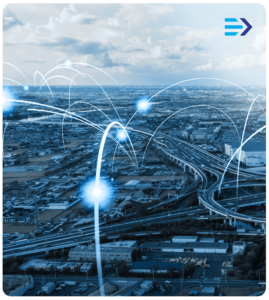Most importers likely still rely on two familiar metrics: free time on dock and free time off-dock.
It’s a simplistic view that misses the real complexity of global freight. Each shipment moves through a series of stakeholders and handoffs. If you’re only tracking outcomes at the endpoint, you’re not managing your supply chain…you’re reacting to it.
We’ve found that import operations don’t fail all at once. They fail in stages. When you can’t see the stages, you pay the price in demurrage, detention, and missed appointments.
Stakeholder Visibility Is the Missing Link in Import Cost Control
Yes, visibility is still a rather annoying buzzword in our industry. Why? Because every importer depends on a web of third parties: ocean carriers, terminals, truckers, warehouses, drayage providers, brokers, and more.
Yet too often, there is no accountability built into the process. Stakeholders are left to operate in silos. When exceptions occur (and they always do) no one raises a hand until the cost has already incurred.
There are “visibility” tools out there that can show you where a single container physically is, but until now, there hasn’t been a reliable way to use more complex data across all these stakeholder touchpoints to improve operations and truly impact efficiency and cost.
At EDRAY, we’ve segmented the full import journey into operational “nodes.” These nodes reflect each movement or stakeholder transition, giving us a way to track expectations at every step. This allows us to manage accountability in real time, not after the fact.
When something slips, say a chassis isn’t secured, a pickup window is missed, a container goes on hold… we catch it. And because each node is timestamped, geo-tagged, and tracked, we also know who’s responsible.
Early Exception Management Cuts Costs Before They Snowball
The most expensive problems in the supply chain are usually the ones no one saw coming. That’s why early exception detection is no longer optional. Identifying exceptions earlier in the lifecycle gives importers time to respond. It’s the difference between rescheduling a pickup and paying two extra days of demurrage.
Our system captures each exception and its root cause. That data feeds into reporting and analytics. Over time, importers can pinpoint repeat offenders, systemic delays, or flawed processes that would otherwise go unnoticed.
Industry analytics make a clear case: early exception detection + stakeholder orchestration = supply chain resilience and cost control. This is how importers protect against hidden drag, fighting costly silent failures with actionable transparency.
Learn more about how to keep accessorial charges under control here
Real-Time Shipment Analytics Drive Long-Term Improvement
Managing exceptions in real time is only part of the value. The greater opportunity lies in what the data reveals over time. When exceptions are documented across each node, importers can perform true root cause analysis.
- Where in the process are delays most common?
- Which stakeholders are driving the most cost leakage?
- How does performance (time & cost) vary by port, carrier, or partner?
This type of intelligence moves you from reactionary logistics to predictive supply chain management. It creates the foundation for contract negotiations, KPI scorecards, and performance-based accountability across your network.
We’ve spent years building the execution layer to support this, and now we’re unlocking the deeper value of helping importers respond faster and improve smarter.
What Importers Can Expect When Exceptions Are Managed Proactively
Here’s what a tech-forward, segmented, exception-aware supply chain delivers:
- Fewer surprise fees from earlier detection of at-risk shipments
- Stakeholder accountability through timestamped performance at every node
- Increased free time utilization by aligning dispatch with port and drayage movements
- Better decision-making from structured reporting and trend analysis
- Improved customer experience with fewer delays and service failures
When you see the whole picture, you can influence outcomes. When you only track the result, you’re stuck paying for the breakdown.
Managing stakeholders isn’t about more meetings, micromanagement, or inflaming relationships with blame. It’s about visibility, accountability, and avoiding cost, which can help build stronger relationships across stakeholders as you all improve together.
Resilient importers need tools that turn fragmented handoffs into transparent, manageable checkpoints. That’s what we’ve built at EDRAY, and that’s why our customers are consistently gaining control over their import operations one node at a time.
Are you looking for more than just another “visibility tool”.
Let’s chat! Contact our team here.
